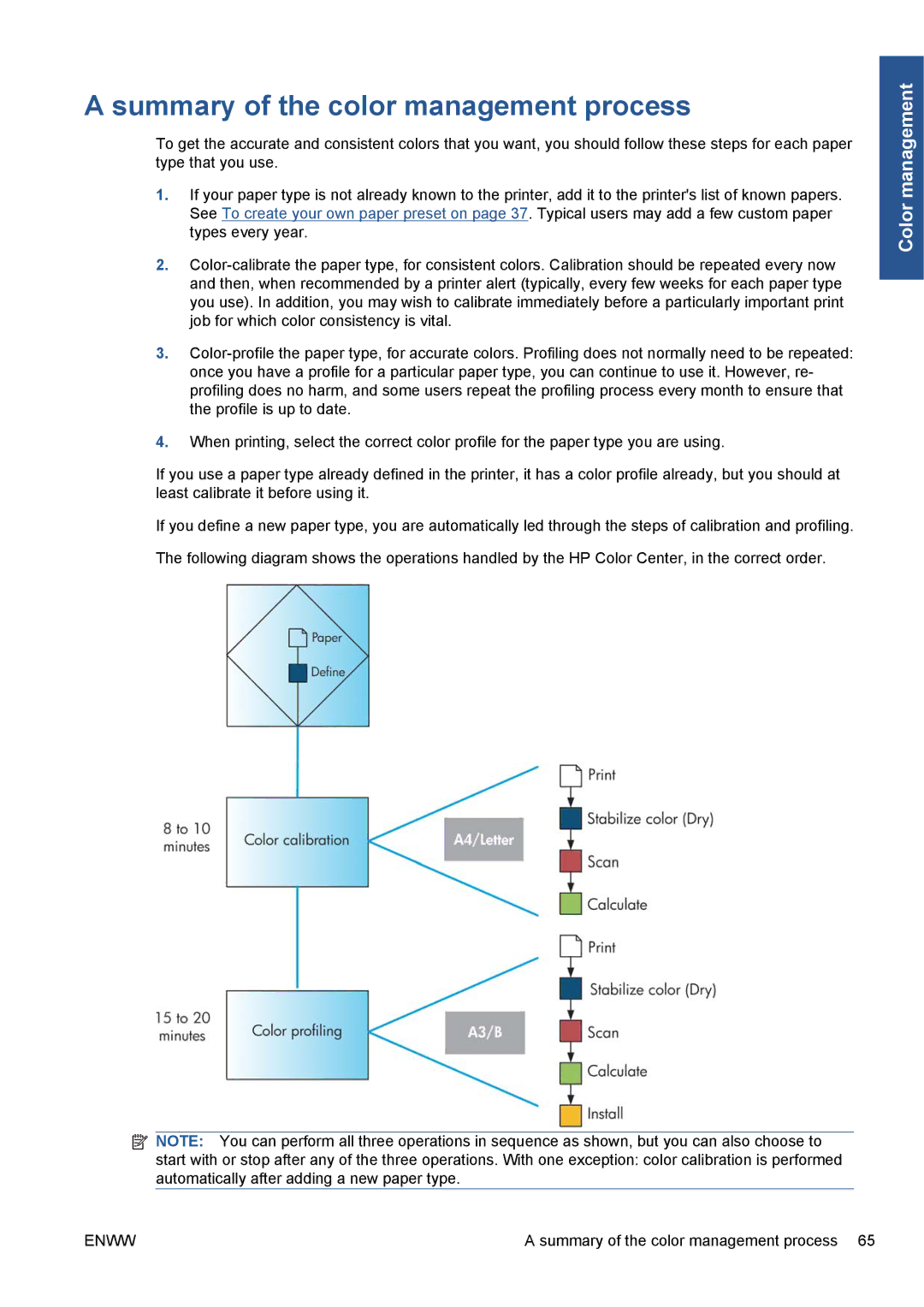
A summary of the color management process
To get the accurate and consistent colors that you want, you should follow these steps for each paper type that you use.
1.If your paper type is not already known to the printer, add it to the printer's list of known papers. See To create your own paper preset on page 37. Typical users may add a few custom paper types every year.
2.
3.
4.When printing, select the correct color profile for the paper type you are using.
If you use a paper type already defined in the printer, it has a color profile already, but you should at least calibrate it before using it.
If you define a new paper type, you are automatically led through the steps of calibration and profiling.
The following diagram shows the operations handled by the HP Color Center, in the correct order.
![]() NOTE: You can perform all three operations in sequence as shown, but you can also choose to start with or stop after any of the three operations. With one exception: color calibration is performed automatically after adding a new paper type.
NOTE: You can perform all three operations in sequence as shown, but you can also choose to start with or stop after any of the three operations. With one exception: color calibration is performed automatically after adding a new paper type.
Color management
ENWW | A summary of the color management process 65 |
